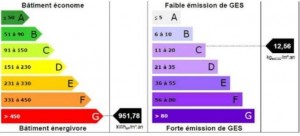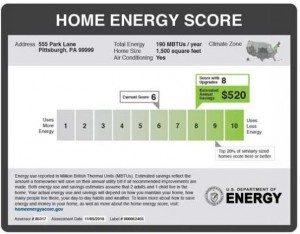During this political season we have heard a lot about government mandates versus market forces to bring about change, growth and economic health. I argue that one role of government is to set standards and goals for the country – and that a major role of industry is to develop and market tools and products to meet or surpass those goals. Limiting and reducing carbon is a huge goal setting opportunity.
France has mandated that on transfer (sale or rental), homes and apartments must be tested for energy efficiency; testing of new homes is to start in January 2013. The tests measure the efficiency of the home’s heating and air conditioning systems and it’s domestic hot water system. The reports from the tests list improvements that can be made to reduce consumption and provide information about investment and expected payback periods.
of new homes is to start in January 2013. The tests measure the efficiency of the home’s heating and air conditioning systems and it’s domestic hot water system. The reports from the tests list improvements that can be made to reduce consumption and provide information about investment and expected payback periods.
The home is assigned a rating ‘grade’ for energy consumption ranging from A(green, best, less than or equal to 50kWh/sq meter annualized) to E(red, least efficient, greater than 450 kWh/sq meter annualized). A label displaying the grade can be displayed on the house and is included in the real estate listings information. This label is accompanied by an estimate of green house gas emissions associated with that energy usage. This is measured in kg of carbon/sq meter annualized. The label provides a quick and easy visual for consumers to weigh choices.
The short term (2012) European Union/French goal for overall household electrical consumption is 50kWh/ sq meter annualized. The 2020 goal is zero. These goals are to be achieved with a combination of reductions and utilization of renewable energy from solar and wind.
Here in the US, the DEP developed the Home Energy Score rating tool which is similar in measurement and graphic  reporting to the French system. Home Energy Score tool is used minimally in the housing market but, where it is used, it provides a great deal of information about performance and provides guidance on improvements that can be made that would have a direct impact on that performance.
reporting to the French system. Home Energy Score tool is used minimally in the housing market but, where it is used, it provides a great deal of information about performance and provides guidance on improvements that can be made that would have a direct impact on that performance.
Like the car label the Home Energy Score rating label is focused on consumption without relating it to the affect that consumption has on the environment. It also doesn’t tie back to overall country environmental goals.
President Obama’s goal under the Home Energy Score program is to test, measure and rate all homes in the US. The goal is to make us better informed about best ways to renovate or improve our homes and about the efficiency of the homes we are contemplating buying or renting. The backlash from industry, especially the National Association of Realtors, against the idea of this mandate was strong but not surprising. Their fear? They think that if folk found out how inefficient their homes were, no one would buy them. SHORTSIGHTED, I say. Measuring and informing would help to spur the entire contracting industry to insulate, seal, update appliances and create healthier indoor environments. It would also spur a stronger market for new more efficient products and marketing opportunities to complement the Home Energy Score program.
Augmenting the Home Energy Score label with information about the carbon impacts of consumption and relating it to overall goals in a US Energy Policy would make the program an even stronger impetus for economic growth.
All this depends on the goals set by the government – carbon reduction goals. The US government has all of the bones assembled to build a strong US Energy Policy AND it has developed all the tools to implement that policy. What it lacks is support from congress and special interest groups to put it together in a cohesive format to move forward. It is time for congress, industry and special interest groups to get on board, to recognize climate change is occurring, to accept CO2 emissions as the main green house gas contributing to climate change, and to set an energy policy so that we can be as forward thinking as our friends in Europe.
